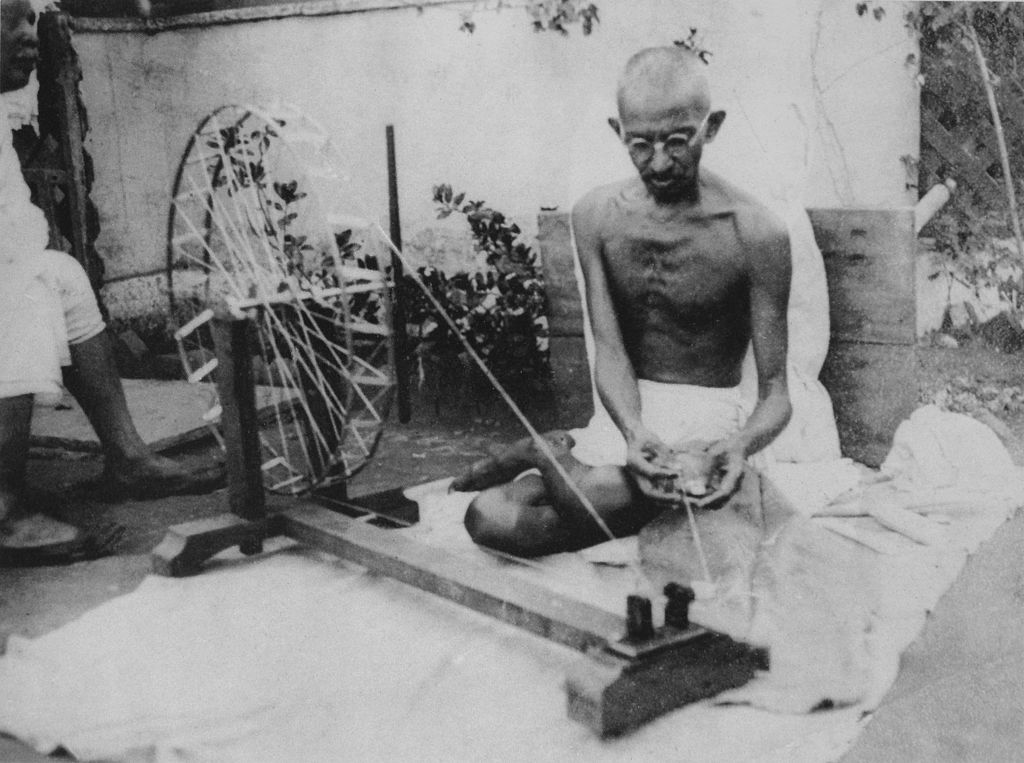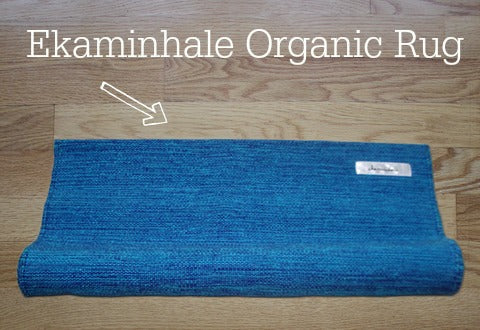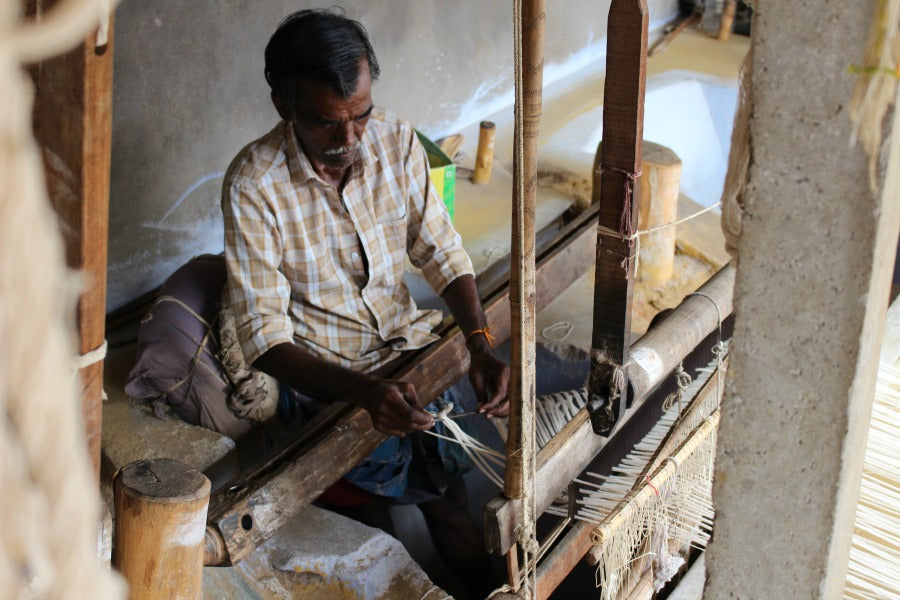
True story.
Bouncing through the Indian countryside in an SUV on our way to see how the organic Mysore rugs are made I asked my supplier
“So how many of your 75 buyers come to see you and how your products (cushions, rugs, bags etc) get made?
He said “One of my biggest buyers of 17 years has never been here. About 15 or so come to the office and then a handful to see the looms.”
I mean why would they? It's not like they would be in India learning yoga or anything.
It’s something that I see very commonly.
Businessmen selling yoga products without a yoga education. You don't need to learn yoga. Just internet marketing.
From the surface it might not look like it matters but it does. They put business first. Yoga second.
For me it’s different.
It’s Yoga first. Business second.
It's always been that way and as I'll show in this post life turns out differently when you put first things first.
The Yoga Field Trip
Recently we made our 3rd trip to study at the source of Ashtanga - KPJAYI in Mysore.
After our studies we took a field trip to meet my organic rugs supplier. I wanted to see first hand who was making the rugs, understand the process and meet the people involved.
As I was getting ready to leave my hotel room in Mysore I held in my hand one of the blue organic rug samples.
It was dirty from practice, my luggage was overflowing and we were in a hurry because the taxi was waiting. I thought to myself I’ll just grab another one and leave this one here but something stopped me. Instead I rolled it up in my mat shoved it in my mat bag and jumped in the taxi.
The next day we met with my supplier to visit his offices and learn about the rug making process.
Below you will find what I saw with my own eyes and I heard with my own ears. All the pics and video you see Franceska and I took ourselves (read they weren't just emailed to us)
I haven't gone as deep into the process as I will in future trips (seeing the dyeing etc). This is version 1.0. and according to my supplier I fall in the top 1% of people who have even gone this far.
The Offices
I really had no idea what to expect as we drove to the “factories” and main office. Was I going to see a massive plant with thousands of sewing machines, horrible working conditions etc? I mean you hear the stories.
Not really.
It’s more like a family business and it was literally one of the cleanest places I've seen in India.
The pics below are actually the last stage in the process. There are other products being finished off but basically these offices are where they add the labels and then package the rugs up for shipping.
The more interesting part is how the rugs actually get made. Which I'll show next.


The Master Weaver and The Looms
After the office we hopped back in the SUV for Part 2 of the field trip. Along the way we passed turmeric fields which I got really excited about. My supplier stopped the vehicle then went out got us some fresh turmeric root to smell. Watching the owner of the business washing the turmeric off in a full squat I thought.....this is the kind of person I like to do business with.
It took us almost 2 hours to get to the home of the “Master Weaver”. I kept waiting to see some type of factory but instead the “office” of the Master Weaver was his home.

How it works is the Master Weaver supplies looms to homes in the area and then the weavers make the rugs to supplement their income which also comes from farming. Weaving is a dying industry so just by purchasing the rugs we are helping the weavers.
Next we visited one of the homes where the rugs are made.
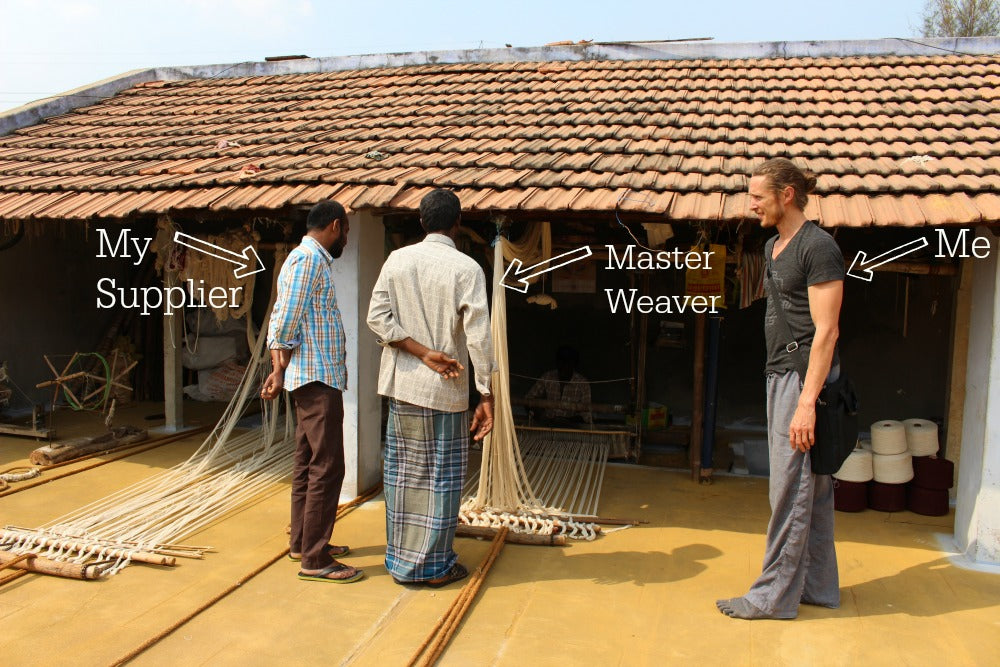
This is like the original version of working from home. In this version though they are actually calming their minds rather than distracting them.
Each home has "pits" where the weaver stands to use the loom. I couldn't help but notice that they didn't sit in chairs but instead leaned back as they did their weaving from a standing position or when spinning the yarn they sat on the ground.
Some of these people are generations of weavers going back 200 to 300 years and since it is their home their children are around like in this picture below.

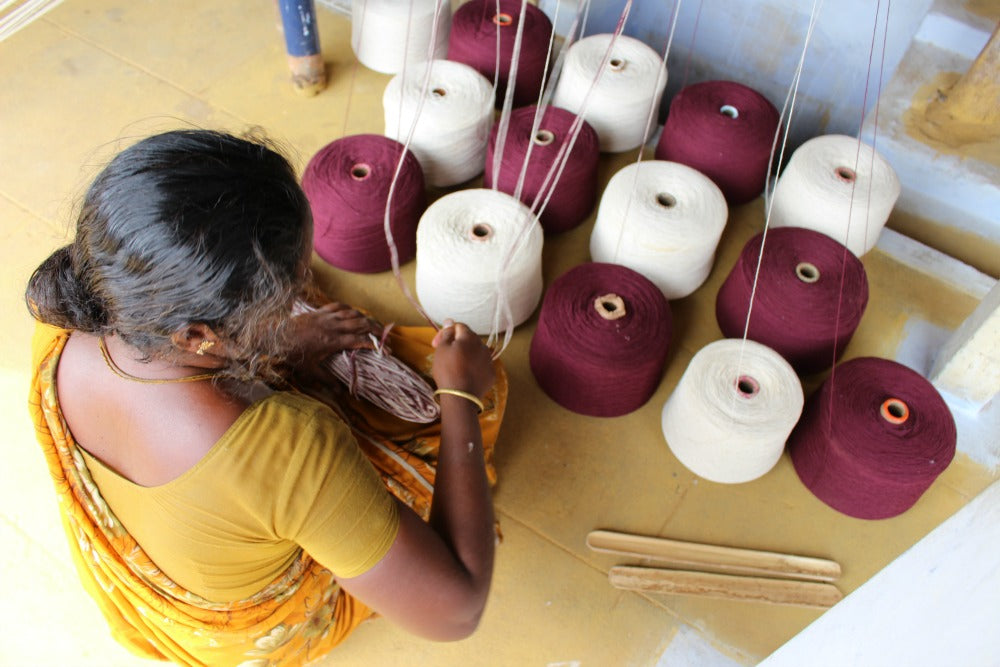
This is the pic where I thought of a very famous person who used spinning to calm their mind. Do you know who I mean? (Answer at the end)
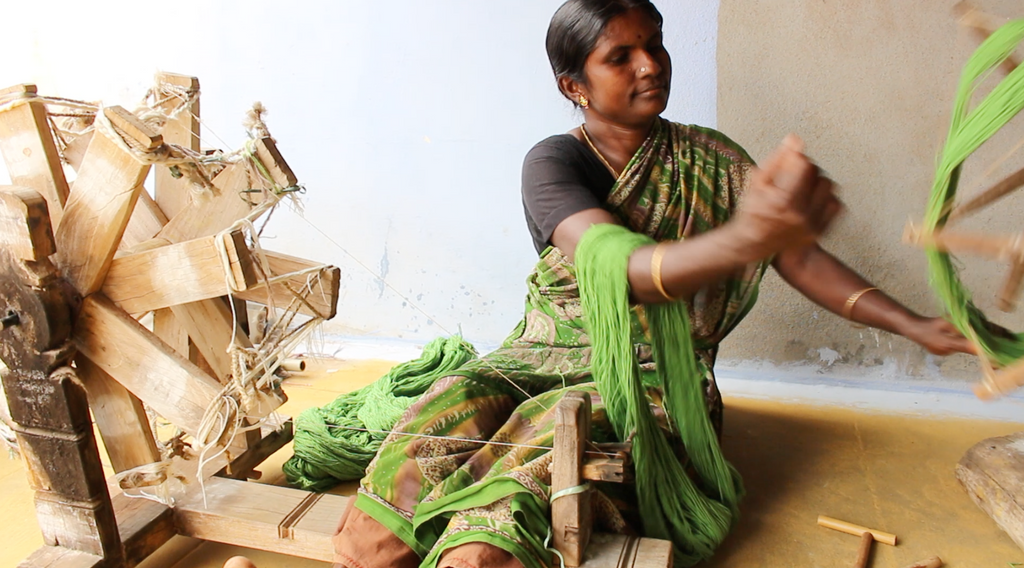
As I watched the weavers make the rugs that’s when it hit me.
This is not just a Product.
How naive I was to have even considered throwing away my rug.
Someone had spent 3 hours of their life creating the rug by hand and here I was treating it as just another “product”.
There is a difference between a machine that creates something and when a person does by hand.
There is a difference when it's the surface that you spend hours and hours doing your spiritual practice on.
The Big Picture - This is Much Bigger Than Rugs
You see this is really about a much bigger picture.
It's about our connection to the natural world.
Whether that's the breath in our practice, our feet on the earth, sunshine on our faces, cotton on our mats or with people in our lives.
We are losing that connection. Technology is getting in between it.
We interact with screens instead of people. We sit inside in shoes instead of with our bare-feet on the earth. We have fluorescent lights in our eyes instead of sunshine. Chairs instead of squats.
We practice on sticky mats & microfiber towels made by machines that pollute our earth instead of cotton rugs woven by people.
Every step we take away from nature is a step away from the very thing that nourishes us.
But when you step into nature, removing technology, the results show up in ways you can't predict.
I realized that if I hadn’t gone to see the rug weavers in person I wouldn't know the work that goes into each rug.
Instead of this post you would just see what anyone else who has a yoga product has on their website - a product and a price.
I would never have put the pieces together that we don’t need 30 rugs and 30 mats in our lifetime of practice.
We need 1 mat (maybe) and a couple well made rugs that we take care of.
I had the rugs for sale on the site for a couple days but I realized if I was going to charge a higher price I need to:
1. Explain why you would pay more compared to other rugs
2. Get Eco-friendly shipping (Originally they were being shipped in these crazy boxes full of more plastic crap by my shipper)
3. Write up a warranty so you know you are buying a quality rug you can use for years and years.
4. Give back - 10% of profits go towards environmental efforts.
Before you go.
One thing that really stuck out to me while I was there and keep thinking about is the lifestyle of the weaver and the effect it had on his body and peace of mind.
He spends his time with his family calmly weaving the rugs, living close to nature, drinking coconuts barefoot in a full squat at 50 plus?
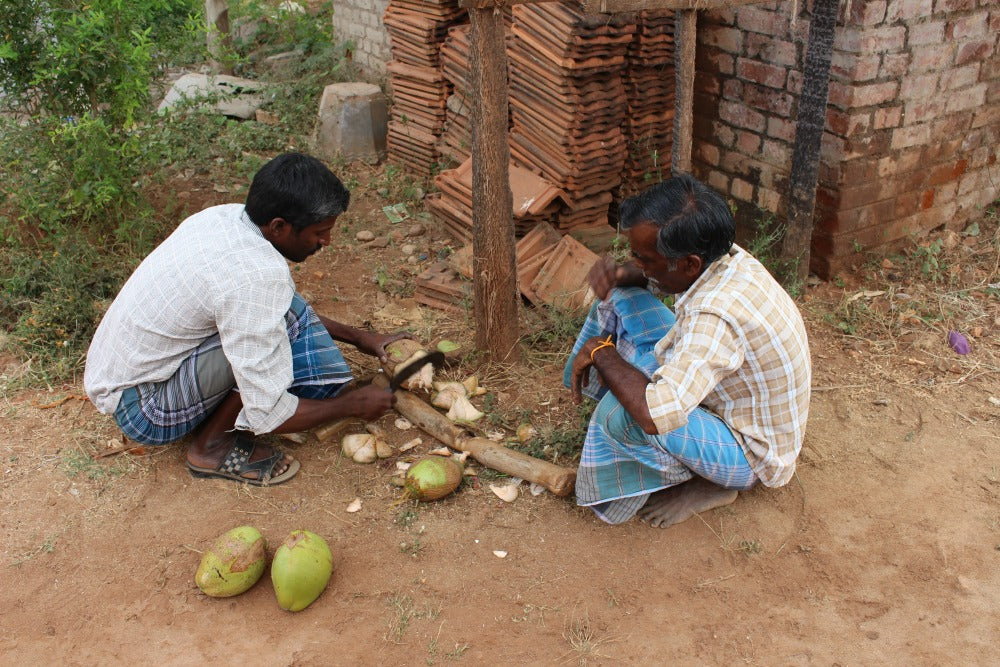
Then we have the western man - chained to his technology, cultivating a distracted mind, unable to squat, away from his family, away from nature.

It brings up some questions. Is the latest technology the answer to our problems? Or is it the cause of them?
Maybe the answer is removing the technology and establishing our connection with nature.
This post is part of a Free 4 part email series that teaches about "Slow Fashion" - the new paradigm for conscious consumers. It comes with a special offer on the rugs for those that give their time to learn.
